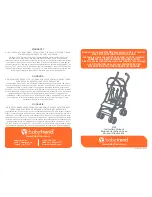
ZENN
iO
AVANCE Y TECNOLOGÍA
vwww.zennio.com
24
24
The first one (2-point hysteresis control) determines whether to open
(“Zone x – Grille control” = 1) or
to close
(“Zone x – Grille control” = 0) the grille, according to the diagram shown in figure 5.2.
Figure 5.2. Grille behaviour during the
“2-point hystheresis” thermostatic control for cooling
Regarding the second method (PI control),
it consists in the continuous execution of the “PI control”
mathematic algorithm, which continuously determines, depending on how the setpoint and the
reference temperatures of the zone differ, the proper opening level for the grille valve. Considering
that not every grille permits partial opening, this percentage is then interpreted as the ratio between
the time the grille will stay open and the time it will stay closed, given the parameterized cycle time.
Thermostatic control for heating
In an exactly analogous manner, the thermostatic control for heating permits selecting between a 2-
point with hysteresis control and a PI control with pulse width modulation. In this case, the flow
diagram for the first one is as shown in figure 5.3.
Figure 5.3. Grille behaviour
during the “2-point with hysteresis” thermostatic control for cooling
T
REF
> T
SETPOINT
+ H
Upper
Yes
(“it is hot”)
No
(“it is cold”)
Grille is open?
Grille is closed?
Do nothing
Yes
Yes
No
Open grille
No
Close grille
¿Tª
REF
< Tª
CONSIGNA
+H
INF
?
Sí
(“hace frío”)
No
(“no hace frío”)
¿Rejilla=abierta?
¿Rejilla=cerrada
?
No hacer nada
Sí
Sí
No
Abrir rejilla
No
Cerrar rejilla






































